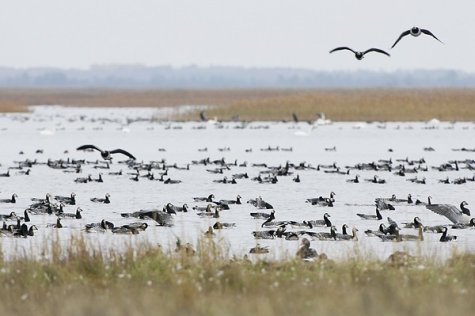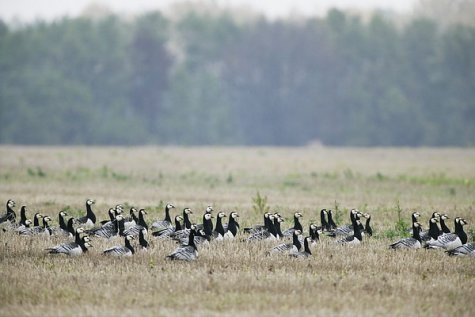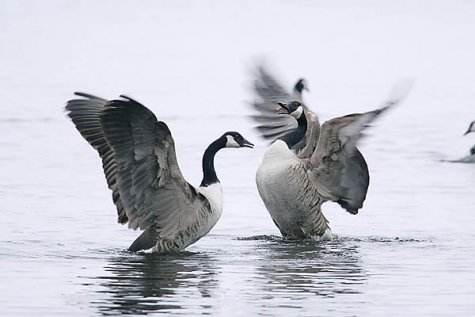Barnacle geese stay until snow comes
Photos: Arne Ader
Translation: Liis
Barnacle geese at Matsalu Bay
Barnacle goose Valgepõsk-lagle Branta leucopsis
70 000 barnacle geese are estimated to pass Estonia on migration in autumn, mainly birds that have been nesting in the Russian tundras but also Novaja Zemlja. On Sunday more than 11 000 passing migrants were counted in Haapsalu, and in Kihnu nearly 3 000. The ones counted in Haapsalu can probably be encountered in the Matsalu shore meadows. Of course these numerous passing migrants can be seen in other coastal areas as well. Some decades ago they stayed to forage only during the spring migration. Although barnacle geese are not hunted in Estonia they are extremely wary birds. For feeding they only choose large open meadows and fields which may be quite far from the areas on the coast where they spend the night.
Barnacle geese
The plumage of our most numerous passing goose migrant, the barnacle goose, is patterned in black-grey-white, the legs as well as beak are black and the characteristic white cheeks are visible from far away. The flight image is quite similar to that of grey geese but they are smaller and by weight about one third lighter – about a couple of kilos.
With their noisiness a loudly calling flock flying past catches every watcher’s attention and it doesn’t sound similar to the characteristic goose quacking.
Canada geese. Lake Hornborga, Sweden
If by rare chance a „giant“ with rather similar plumage should be noticed in a barnacle goose flock it is likely to be a Canada goose /Branta canadensis/, their weight compared to barnacle geese is up to three times as much.
About brent goose soon, their migrant flocks were already noticed on Sunday in Hiiumaa and Läänemaa.
The migration of barnacle geese can be monitored in the e-Biodiversity database: LINK
See the Canada goose observations: LINK











